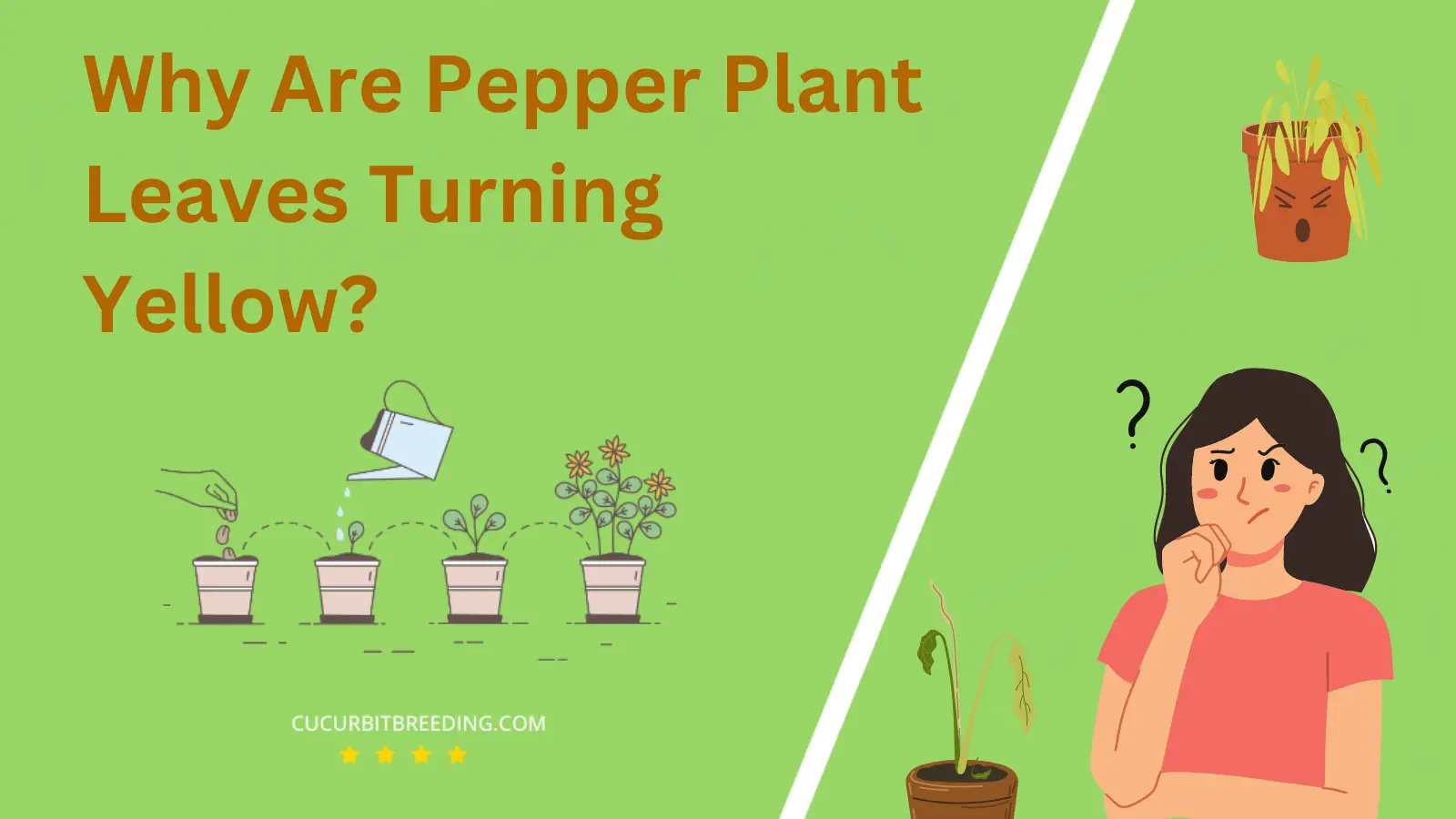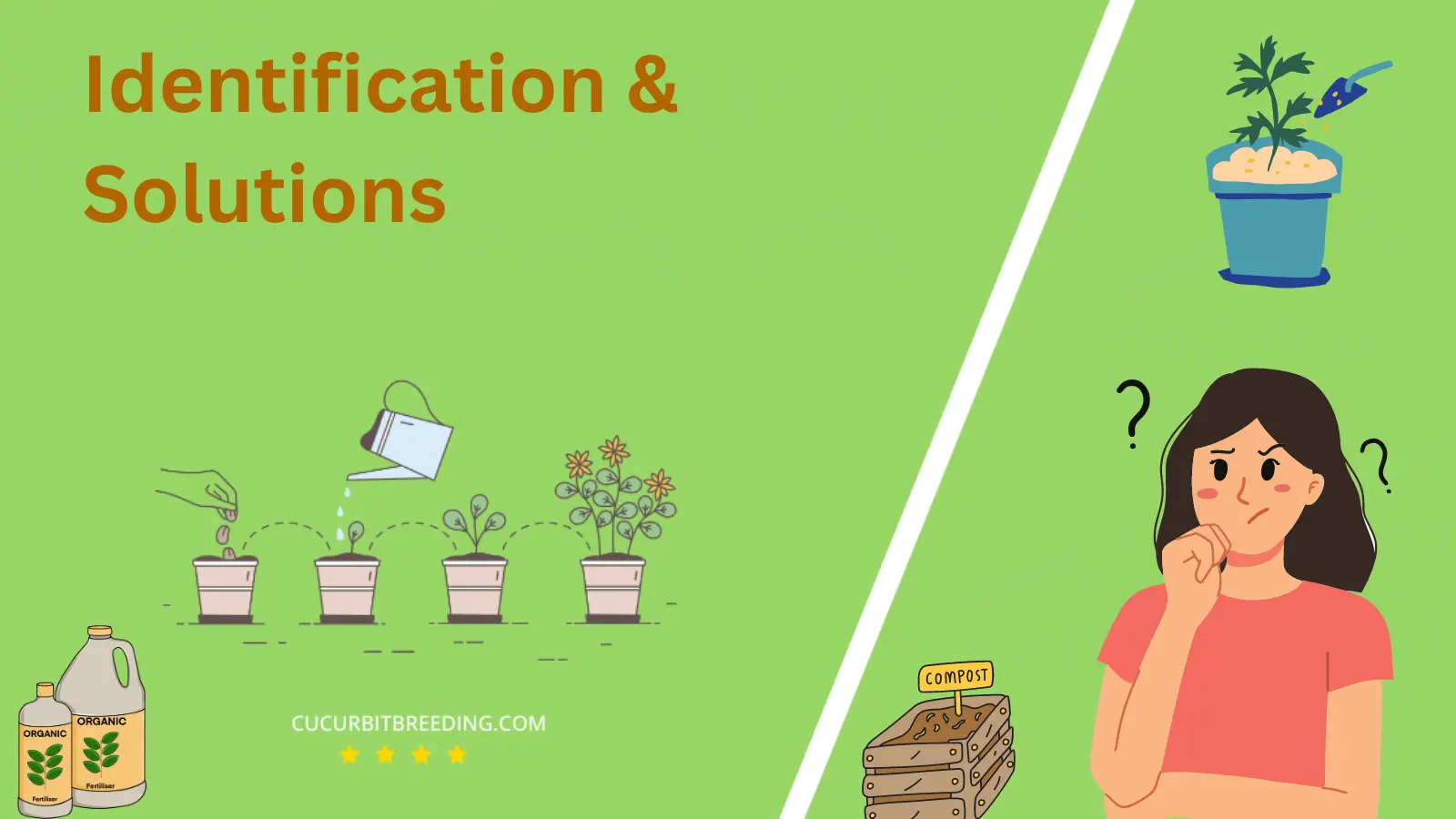
Many gardeners ask, “Why are pepper plant leaves turning yellow?” This phenomenon, faced by several gardeners, can be a real cause for concern. As with people, plants also show signs of distress which can manifest as yellowing leaves.
The reasons can vary quite significantly – it might be environmental factors, nutritional deficiencies, or even disease. Proceed further to learn more about this unique gardening conundrum and its possible solutions.
Why Are Pepper Plant Leaves Turning Yellow?
1. Nutrient deficiency
| Description | causes the leaf to turn yellow due to lack of essential minerals for proper growth. |
|---|---|
| Solution | Ensure proper nutrient balance through soil testing and appropriate fertilizer application for healthy plant growth. |
The shedding or discoloration of leaves in pepper plants can often be attributed to a nutrient deficiency. This implies the plant is not receiving enough of a particular substance necessary for its proper growth and development. Leaves turning yellow is often a sign of a lack of nitrogen, which is one of the most vital nutrients for pepper plants.
**Nitrogen deficiency** is one of the most common causes of yellowing leaves. Nitrogen aids in the production of chlorophyll, the pigment responsible for the green color of plants. When nitrogen levels fall, the plant’s ability to synthesize chlorophyll reduces, causing leaves to turn yellow.
**Solution**: A quick fix for nitrogen deficiency is to add a nitrogen-rich fertilizer to your plants. However, it is important to note that over-fertilization can also damage the plant. Therefore, it’s critical to follow the instructions on the fertilizer packet concerning dosage and application frequency.
Other nutrients that, when deficient, can lead to yellowing of leaves include iron, magnesium, and zinc. If nitrogen fertilization does not solve the issue, consider having the soil tested to identify any other nutrient deficiencies. Then, add the appropriate fertilizers or soil amendments to address the specific deficiencies.
In all instances, maintaining proper watering practices and ensuring adequate sunlight exposure, as per the plant’s needs, also helps in preserving its overall health and vitality.
2. Overwatering or poor drainage
| Description | can lead to root rot, preventing the roots from absorbing nutrients and causing yellowing leaves. |
|---|---|
| Solution | Ensure proper watering and drainage to prevent overwatering, which causes yellowing of pepper plant leaves. |
Overwatering or poor drainage can lead to the yellowing of pepper plant leaves. When a plant is given more water than it can absorb, the roots become waterlogged and oxygen starved. This poor soil oxygenation leads to the development of root rot and the plant’s inability to take up necessary nutrients, causing leaf yellowing or chlorosis.
One of the best solutions against overwatering is by implementing proper watering techniques. Water the plants deeply but less frequently, this encourages roots to grow deeper into the soil, improving their overall health and resistance to diseases. Ensure a well-draining soil structure too. If the plant is potted, check to see that the pot has sufficient drainage holes.
It would also be beneficial to invest in a moisture meter. This device will take the guesswork out of watering and help prevent overwatering in the future.
3. Pest infestation
| Description | The yellowing of pepper plants’ leaves may be due to pest infestation, affecting their physiology. |
|---|---|
| Solution | Apply organic insecticidal soap to control pests and prevent further yellowing of pepper plants’ leaves. |
Pest Infestation and Yellowing Pepper Plant Leaves
Pepper plants can be quite susceptible to pest infestations, particularly from aphids, spider mites, and whiteflies. Such pests feed on the sap within the plant’s leaves, which can result in yellow discoloration. This yellowing, known as chlorosis, is a sign that the plant is under stress.
Pest management strategies include regular inspection of plants, pruning and discarding infested leaves, applying natural insecticides such as neem oil, or using public enemy pests such as lady beetles that naturally prey on these harmful insects. It’s always crucial to maintain healthy growing conditions to prevent infestations, which includes providing the right light, water, and nutrients.
Preventative measures include regular crop rotation and diversifying your garden with plants that naturally repel these pests. Implementing proper sanitation practices, such as cleaning gardening tools and removing debris, can also prevent pest infestations.
Remember, prompt treatment is key to restoring your pepper plant’s health.
4. Disease or fungal infection
| Description | The yellowing of pepper plants’ leaves may be due to pest infestation, affecting their physiology. |
|---|---|
| Solution | Apply organic insecticidal soap to control pests and prevent further yellowing of pepper plants’ leaves. |
Pepper plant leaves can turn yellow due to disease or fungal infection. These issues interfere with the plant’s ability to absorb the necessary nutrients and water it needs for growth. Disease or fungal infection weakens the plant and can lead to discoloration of the leaves. Disease or fungal infection not only affects individual leaves but can eventually affect the whole plant if not treated efficiently.
To address this issue, remove the affected leaves from the plant to prevent the disease or fungus from spreading. Use a fungicide that is safe for food crops, following the manufacturer’s instructions for dosage and application. Furthermore, ensure proper plant spacing to enhance air circulation, which can help prevent the spread of disease and fungi. Consider crop rotation to prevent the buildup of disease-causing organisms in the soil. Regularly cleaning your gardening tools can also help to prevent the spread of diseases and fungi.

5. Environmental stress (e.g., excessive heat or cold)
| Description | Apply organic insecticidal soap to control pests and prevent further yellowing of pepper plants’ leaves. |
|---|---|
| Solution | Provide consistent temperature and avoid extreme weather conditions to prevent yellowing of pepper plant leaves. |
Exposure to environmental stress, especially excessive heat or cold, can cause pepper plant leaves to turn yellow. This is primarily because these conditions hamper the normal functioning of the plant’s physiological processes, such as photosynthesis.
During photosynthesis, plants convert sunlight, carbon dioxide, and water into food, a process that requires an optimal temperature range. When temperatures are excessively hot or cold, the process is disrupted, which may lead to chlorophyll loss, hence the yellowing of leaves.
As a remedy, ensure temperatures are in a suitable range for pepper plants. Most varieties thrive in temperatures between 70°F and 85°F. You can use protective covers or indoor grow lights to maintain appropriate temperatures. Relocating your crop to an area with better temperature conditions can also help. It’s advisable to monitor weather forecasts and move your plants indoors or provide cover if extreme temperatures are predicted.
6. Overfertilization or nutrient burn
| Description | causes excess nutrients to accumulate, disrupting chlorophyll production and leading to yellowing of the leaves. |
|---|---|
| Solution | Reduce fertilizer application and provide proper nutrient balance for healthy plant growth. |
When pepper plants are overfertilized, it often leads to nutrient burn. This condition is characterized by the yellowing of the plant’s leaves because the excessive nutrients alter the pH of the soil and result in “nutrient lockout”, despite the presence of all necessary nutrients, plants won’t be able to absorb them.
The solution for rescuing an overfertilized pepper plant is to flush the soil with water. This process helps in removing the excess nutrients. After flushing, avoid feeding the plants for a few weeks to allow the soil to restore its natural nutrient balance. In the longer term, always make sure to follow the recommended dosage on the fertilizer packaging to avoid overfertilization.
7. Natural aging process
| Description | The natural aging process of leaves causes them to turn yellow due to reduced chlorophyll production. |
|---|---|
| Solution | Maintaining a healthy lifestyle with regular exercise and a balanced diet can slow down natural aging. |
One reason why pepper plant leaves may turn yellow is due to nutrient deficiencies, particularly nitrogen. Nitrogen is a vital nutrient for plants as it is a major component of chlorophyll, the compound by which plants use sunlight to produce sugars from water and carbon dioxide (i.e., photosynthesis).
Without enough nitrogen, the chlorophyll production is affected and the leaves may start to yellow – a process known as chlorosis. This commonly begins in the older, bottom leaves and works its way up the plant.
Another nutrient that may cause leaf yellowing when deficient is magnesium. Magnesium is the central atom in a chlorophyll molecule, so not having enough can affect the plants’ ability to photosynthesize efficiently.
To remedy these deficiencies, feed your pepper plants with a balanced, all-purpose plant food regularly following the package recommendations to ensure it receives the necessary nutrients. You might also consider a supplement specifically for magnesium, such as Epsom salts.